Paddling from Adventure Bay to Cloudy Bay
Bruny Island
We started our paddle at 8am in Adventure Bay, greeted by the morning sunrise and stillness. But as we rounded the headland made south along the fabled Fluted Cape the trip took on an epic scale. These are spectacularly grand and imposing sea-cliffs when viewed from the top. But when you sit at the bottom of them you feel like a character in a Greek myth, waiting for a giant sea creature, or god to emerge from the deep and punish me for daring to gaze on such natural wonders.
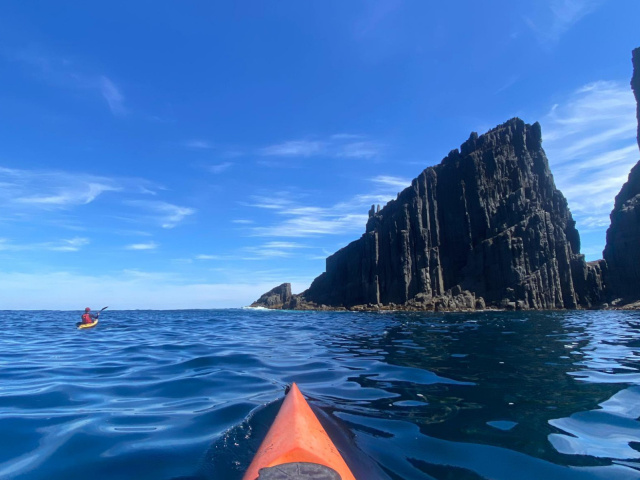
The crack and the boom were otherworldly, and echoed for what felt like minutes, as was the mushroom cloud of sea mist it left behind. Giant sea caves beckoned us to explore them. Many would emit a terrible roar as the swell rolled in and out. One even blasted us with sea spray for daring to get too close.
A few us foolishly decided to paddle through one of the largest caves, initially disappearing from sight, only to emerge on the other side of the cliff, into a wall of white-water surging across the exit of the cave.
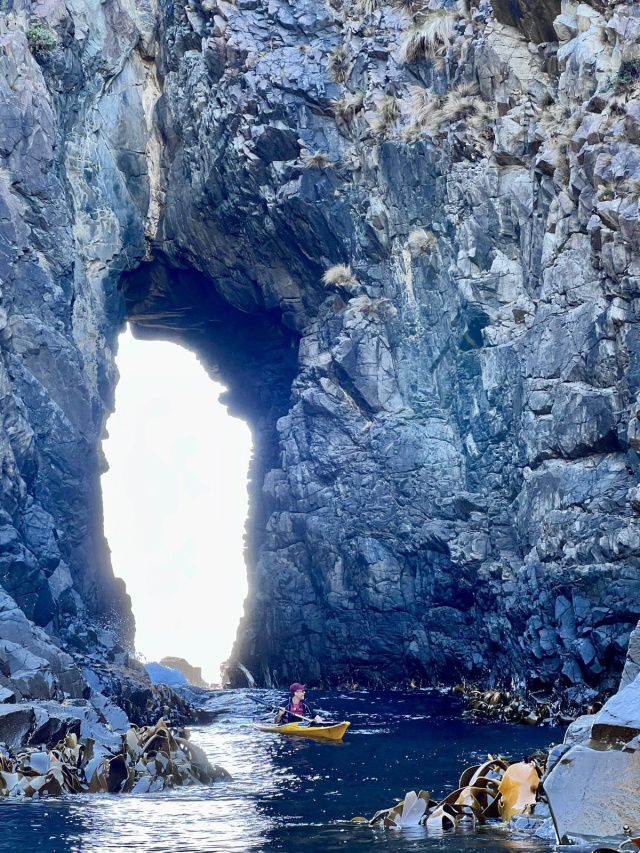
The constant rebound of the modest swell from the sea cliffs and the fact that there is nowhere to exit your boat until you reach the safety of Cloudy Bay, should repel all but the most well prepared and experienced sea-kayakers.
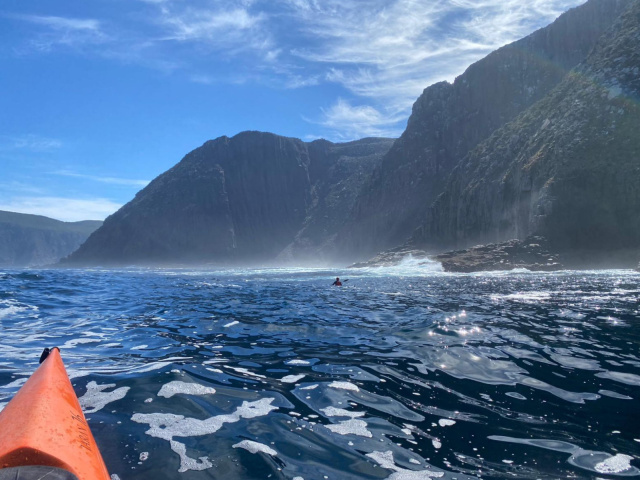
We had countless species of seabirds and curious and playful seals as companions. The sea kelp was mesmerising as it swayed rhythmically below the surface.
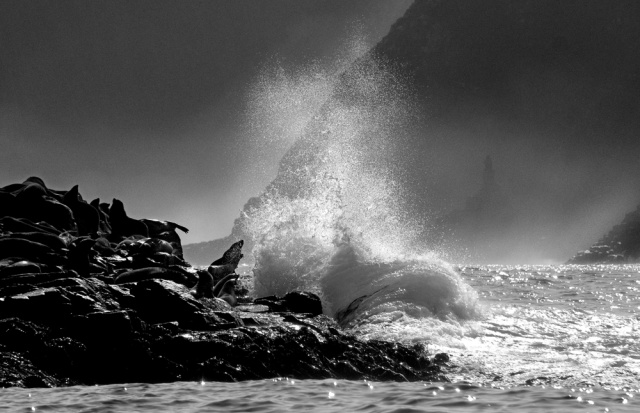
8 hours and 40km later, we were paddling into Cloudy Bay with a sense of achievement and relief, and that warm, lingering satisfaction you feel when you’ve spent a day in nature at its most beautiful and undisturbed.
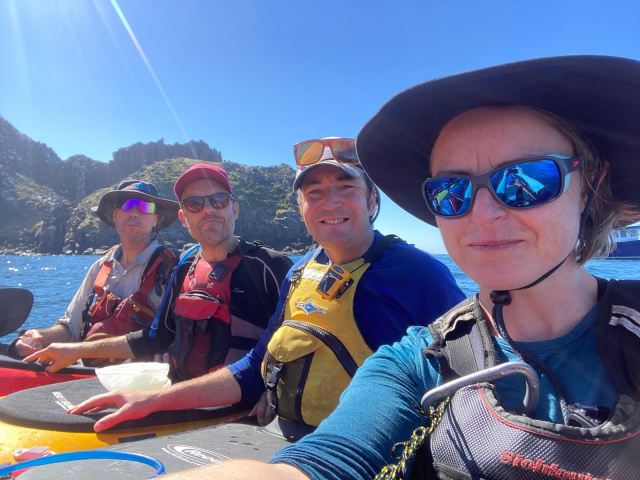
... we were paddling into Cloudy Bay with a sense of achievement and relief, and that warm, lingering satisfaction you feel when you’ve spent a day in nature at its most beautiful and undisturbed.
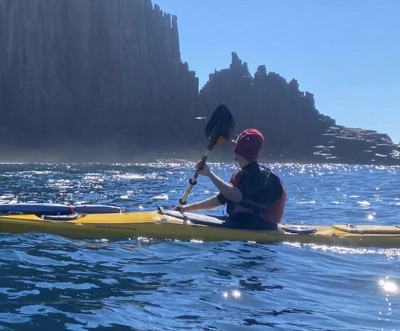
Stephen Karpeles
We started our paddle at 8am in Adventure Bay, greeted by the morning sunrise and stillness. But as we rounded the headland made south along the fabled Fluted Cape the trip took on an epic scale. These are spectacularly grand and imposing sea-cliffs when viewed from the top. But when you sit at the bottom of them you feel like a character in a Greek myth, waiting for a giant sea creature, or god to emerge from the deep and punish me for daring to gaze on such natural wonders.

The crack and the boom were otherworldly, and echoed for what felt like minutes, as was the mushroom cloud of sea mist it left behind. Giant sea caves beckoned us to explore them. Many would emit a terrible roar as the swell rolled in and out. One even blasted us with sea spray for daring to get too close.
A few us foolishly decided to paddle through one of the largest caves, initially disappearing from sight, only to emerge on the other side of the cliff, into a wall of white-water surging across the exit of the cave.

The constant rebound of the modest swell from the sea cliffs and the fact that there is nowhere to exit your boat until you reach the safety of Cloudy Bay, should repel all but the most well prepared and experienced sea-kayakers.

We had countless species of seabirds and curious and playful seals as companions. The sea kelp was mesmerising as it swayed rhythmically below the surface.

8 hours and 40km later, we were paddling into Cloudy Bay with a sense of achievement and relief, and that warm, lingering satisfaction you feel when you’ve spent a day in nature at its most beautiful and undisturbed.

... we were paddling into Cloudy Bay with a sense of achievement and relief, and that warm, lingering satisfaction you feel when you’ve spent a day in nature at its most beautiful and undisturbed.
You might like...

Southwest Tasmania by Kayak

Cycling Bruny

Rare and elusive: the two Bruny birds on visitor wish lists
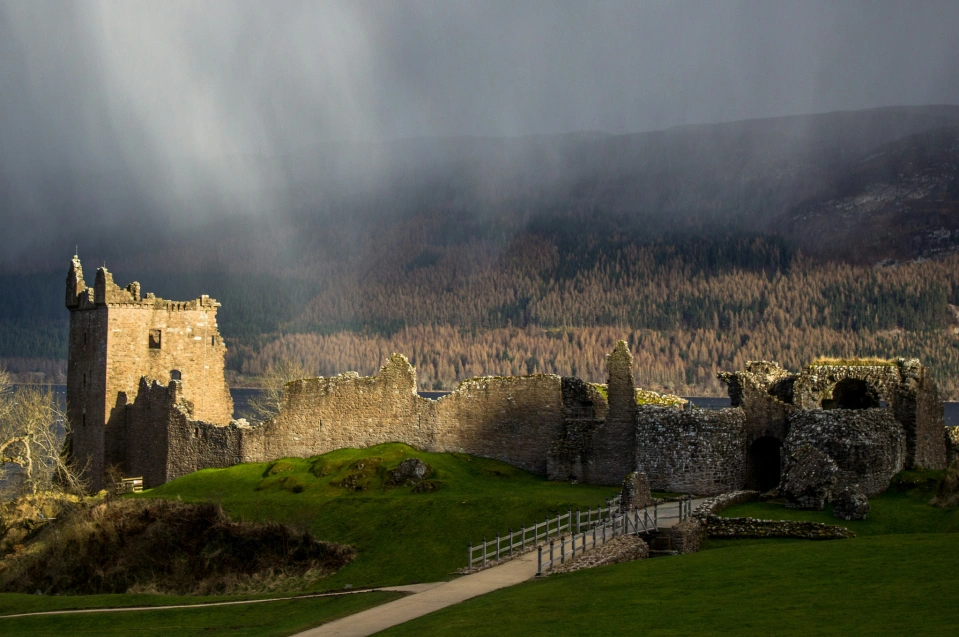
From Loch Ness to South Bruny Island
Newsletter
Sign up to keep in touch with articles, updates, events or news from Kuno, your platform for nature
